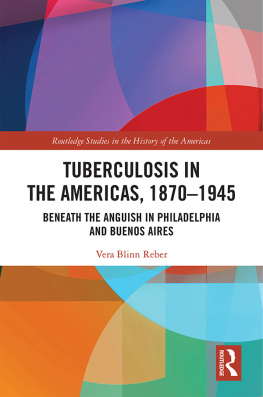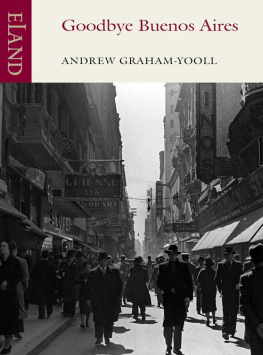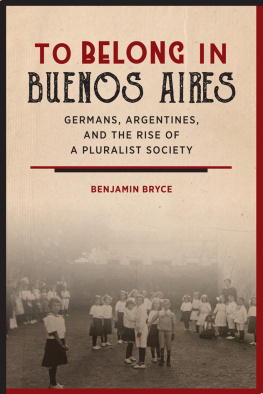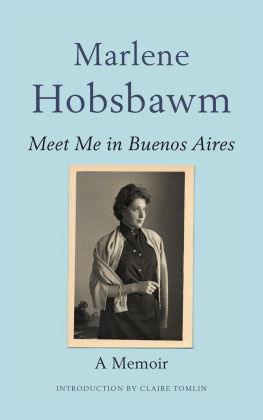First published 2019
by Routledge
711 Third Avenue, New York, NY 10017
and by Routledge
2 Park Square, Milton Park, Abingdon, Oxon OX14 4RN
Routledge is an imprint of the Taylor & Francis Group, an informa business
2019 Taylor & Francis
The right of Vera Blinn Reber to be identified as author of this work has been asserted in accordance with sections 77 and 78 of the Copyright, Designs and Patents Act 1988.
All rights reserved. No part of this book may be reprinted or reproduced or utilised in any form or by any electronic, mechanical, or other means, now known or hereafter invented, including photocopying and recording, or in any information storage or retrieval system, without permission in writing from the publishers.
Trademark notice: Product or corporate names may be trademarks or registered trademarks, and are used only for identification and explanation without intent to infringe.
Library of Congress Cataloging-in-Publication Data
Names: Reber, Vera Blinn, 1941 author.
Title: Tuberculosis in the Americas, 18701945 : beneath the anguish in Philadelphia and Buenos Aires / by Vera Blinn Reber.
Description: New York : Routledge, 2019. | Series: Routledge studies in the history of the Americas ; 4 | Includes bibliographical references and index. |
Identifiers: LCCN 2018030661 (print) | LCCN 2018040615 (ebook)
Subjects: LCSH: TuberculosisPennsylvaniaPhiladelphiaHistory. | TuberculosisArgentinaBuenos AiresHistory. | Public healthPennsylvaniaPhiladelphiaHistory. | Public healthArgentinaBuenos AiresHistory.
Classification: LCC RC309.P4 (ebook) | LCC RC309.P4 R43 2019 (print) | DDC 362.19699/500974811dc23
LC record available at https://lccn.loc.gov/2018030661
ISBN: 978-1-13835950-5 (hbk)
ISBN: 978-0-42943370-2 (ebk)
Typeset in Sabon
by codeMantra
Tuberculosis in the Americas, 18701945
This book focuses on the era during which the cause of tuberculosis had been identified, and public health officials were seeking to prevent it, but scientists had not yet found a cure. By examining tuberculosis comparatively in two Atlantic port cities, Buenos Aires and Philadelphia, it explores the medical, political and economic settings in which patients, physicians and urban officials lived and worked. Reber discusses the causes of tuberculosis, treatments and public health efforts to stop contagion, and how factors such as gender, age, class, nationality, beliefs and previous experiences shaped patient responses and often defined the type of treatment.
Vera Blinn Reber earned a PhD from the University of Wisconsin with specialization in Latin American and Comparative History. She taught World and Latin American History at Shippensburg University for 37 years. Her primary research interests are Argentine and Paraguayan nineteenth-century economic history and urban medical history.
Routledge Studies in the History of the Americas
1 Memory of the Argentina Disappearances
The Political History of Nunca Ms
Emilio Crenzel
2 Projections of Power in the Americas
Edited by Niels Bjerre-Poulsen, Helene Balslev Clausen and Jan Gustafsson
3 Mexico, 18481853
Los Aos Olvidados
Edited by Pedro Santoni and Will Fowler
4 Tuberculosis in the Americas, 18701945
Beneath the Anguish in Philadelphia and Buenos Aires
Vera Blinn Reber
For more information about this series, please visit: https://www.routledge.com/Routledge-Studies-in-the-History-of-the-Americas/book-series/RSHAM
To Librarians and Library Staff
Frontispiece The Challenge
My students were the inspiration for Beneath the Anguish in Philadelphia and Buenos Aires. I regularly taught the Shippensburg University senior seminar on Comparative History and was often disappointed when choosing required books to discover few comparative works by historians. I often used monographs by anthropologists and political scientists. As I examined gaps in student knowledge, I realized how little they knew about the history of science and medicine; it was difficult to find historical monographs dealing with those subjects. In searching for a particular focus, I was struck by how little had been written on tuberculosis in Latin American history. Further, tuberculosis was a significant global disease in the nineteenth century, which required me to treat it within a broader context. Tuberculosis is also of current significance, as once again it is a major killer in underserved communities of the West and in the developing world.
A National Endowment for the Humanities Institute on the Contributions of the History of Medicine to Social Medicine, June 1995, under the direction of David J. Rothman at the College of Physicians and Surgeons of Columbia University provided me a broad background of theoretical readings in the history of medicine. During the summer, it became clear that I needed to turn to the work done by U.S. historians to develop the theoretical background for writing in the field of the social history of medicine. Since I had done much of my early historical work on Buenos Aires, I decided to return to historical research in a city I both knew and loved. I early chose the title, Beneath the Anguish, to indicate my interest in understanding patient perspectives. Research in Philadelphia represented a new challenge. My undergraduate students generally prefer U.S. history to that of other world areas. They worry about their ability to deal with scientific works. Many of my students had lived in Philadelphia and were familiar with the city. Philadelphia has long influenced the history of Pennsylvania. By choosing Philadelphia as my comparison city, I had a good match for examining tuberculosis and could interest my students in the social history of medicine.
Too often, the libraries and archives which make possible the research go unrecognized. So I want to thank the staff at the major centers for medical research in four cities: Buenos Aires, Philadelphia, Washington D.C. and London. In Buenos Aires, three institutions stand out. The Archivo General de la Nacin Argentina provided the happy memories of my previous research in the city. The young staff at the Biblioteca Facultad de Medicina de Universidad de Buenos Aires readily brought me huge collections of books and newspapers and did much photocopying. But the most welcoming place was the Liga Argentina de Lucha contra la Tuberculosis where Dr. Jorge a. Phileu, who died in 2010, served as director. He introduced me to members of the Argentine Medical Association who did the first medical histories in Argentina and included me in their history seminars. He and his assistant at the Liga, Norma Arrizabalga, contributed to my understanding of tuberculosis in Argentina.
In Philadelphia, the Historical Library of the College of Physicians provided a welcoming atmosphere. The Philadelphia City Archives and Temple Universitys Special Collections provided the most significant historical source for Philadelphia, the Annual Messages of the Mayor of the City of Philadelphia. In Washington D.C., I thank the National Library of Medicine staff for preserving Spunk,












